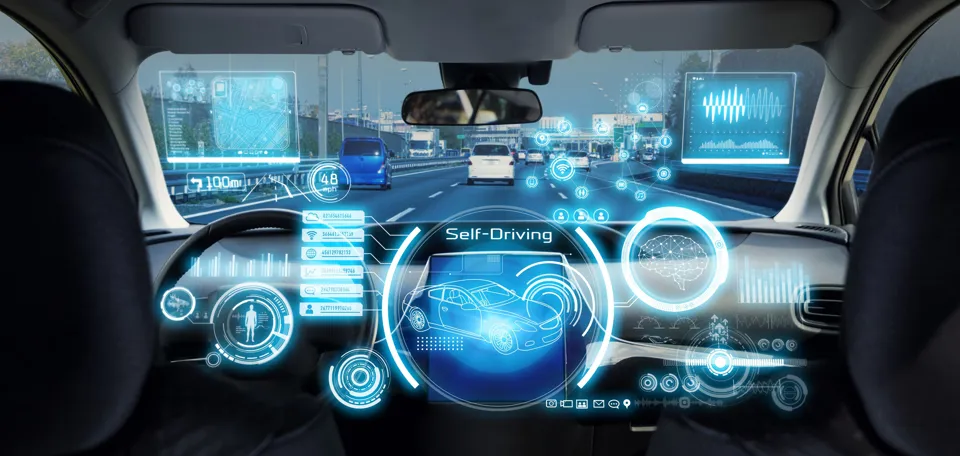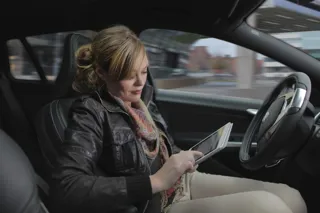The Government has unveiled plans for new legislation to roll out self-driving vehicles on UK roads by 2025.
It has allocated £100 million to deliver its autonomous ambitions, with £34m confirmed today (Friday, August 19) for research to support safety developments and inform more detailed legislation.
That could include researching the performance of self-driving cars in poor weather conditions and how they interact with pedestrians, other vehicles, and cyclists.
Some vehicles, including cars, coaches and lorries, with self-driving features could be operating on motorways in the next year.
Ministers say that the move will enable the UK take full advantage of the emerging market of self-driving vehicles, which could create up to 38,000 jobs and could be worth an estimated £42 billion.
The Government announcement comes as the Centre for Data Ethics and Innovation (CDEI) publishes its Responsible Innovation in Self-Driving Vehicles report, which sets out proposals for a trustworthy approach to the regulation and governance of self-driving vehicles.
The report warns that it might not be enough for self-driving cars to be safer than normal cars.
It says the public may have little tolerance for driverless car crashes - even if they are safer on average.
Transport secretary Grant Shapps said: “The benefits of self-driving vehicles have the potential to be huge.
“Not only can they improve people’s access to education and other vital services, but the industry itself can create tens of thousands of job opportunities throughout the country.
“Most importantly, they’re expected to make our roads safer by reducing the dangers of driver error in road collisions.
“We want the UK to be at the forefront of developing and using this fantastic technology, and that is why we are investing millions in vital research into safety and setting the legislation to ensure we gain the full benefits that this technology promises.”
The Government has launched a consultation on a ‘safety ambition’ for self-driving vehicles to be as safe as a competent and careful human driver.
This ambition would inform standards that vehicles need to meet to be allowed to ‘self-drive’ on the roads, and organisations, such as manufacturers, could face sanctions if standards are not met.
The new laws for the safe rollout of self-driving vehicles by 2025, will be brought forward when parliamentary time allows, it says.
The legislation will build on existing laws, and state that manufacturers are responsible for the vehicle’s actions when self-driving, meaning a human driver would not be liable for incidents related to driving while the vehicle is in control of driving.
Jonathan Hewett, chief executive of Thatcham Research, welcomed the “breadth of the Government’s ambition” in positioning the UK as a centre for self-driving innovation, along with the safety-first approach.
“Ensuring that safe adoption is at the centre of its plans will play a pivotal role in realising the societal benefits of self-driving technology,” he said.
“The cars we drive are changing at an unprecedented rate. But the automotive industry is still at the lower end of a steep learning curve.
“It’s vital that we balance the risk with the opportunity, gathering intelligence on the different use cases for the technology and in turn understanding what it means for all road users.”
He added: “All the ingredients are present for the UK to become a global leader in this space. However, it is paramount that we make sense of the data these vehicles will provide, to inform risk and ultimately pave the way for safe adoption.
“Any challenges encountered by vehicles with self-driving capability will be heavily scrutinised. Complete clarity around the driver’s legal responsibilities, along with how the technology is marketed, how the dealer describes systems when handing over the keys and how the self-driving system itself communicates with the driver, will play its part too.
“As such, collaboration between Government, regulators, carmakers and the insurance industry will be essential to creating a safe system for adoption and the age of humankind interacting with autonomous technology.”
Greg Ford, general manager of Driver Risk Management, says that, while self-driving features are already becoming available on cars, fleets should not expect to see the roll out of driverless within the next few years.
“While, in theory, driverless vehicles could be legal on the UK’s roads by 2025, the reality is this is not going to happen,” he said.
“What this plan is about is setting up a framework for the future introduction of such technology – the reality is driverless vehicles are many years away from being used on our roads.”
He continued: “It’s worth remembering that we already have vehicles with a degree of automation currently on our roads – lane change assist and active cruise control being two such technologies.
“But these technologies still require an alert driver ready to take back control in an instant. This is why training drivers remains critical – they need to be aware of the risks surrounding them on the road and be prepared to take the necessary action to avoid an incident.”
The Government has also allocated £20m, as part of the overall £100m, to help kick-start commercial self-driving services and enable businesses to grow and create jobs in the UK, following an existing £40m investment.
Successful projects could help see, for example, groceries delivered to customers by self-driving vehicles, or shuttle pods assisting passengers when moving through airports.
It says that £6m will also be used for further market research and to support commercialisation of the technology.
AA president, Edmund King, said: “Assisted driving systems, for example, autonomous emergency braking and adaptive cruise control, are already helping millions of drivers stay safe on the roads.
“It is still quite a big leap from assisted driving, where the driver is still in control, to self-driving, where the car takes control.
“It is important that the Government does study how these vehicles would interact with other road users on different roads and changing weather conditions.
“However, the ultimate prize, in terms of saving thousands of lives and improving the mobility of the elderly and the less mobile, is well worth pursuing.”























Login to comment
Comments
No comments have been made yet.